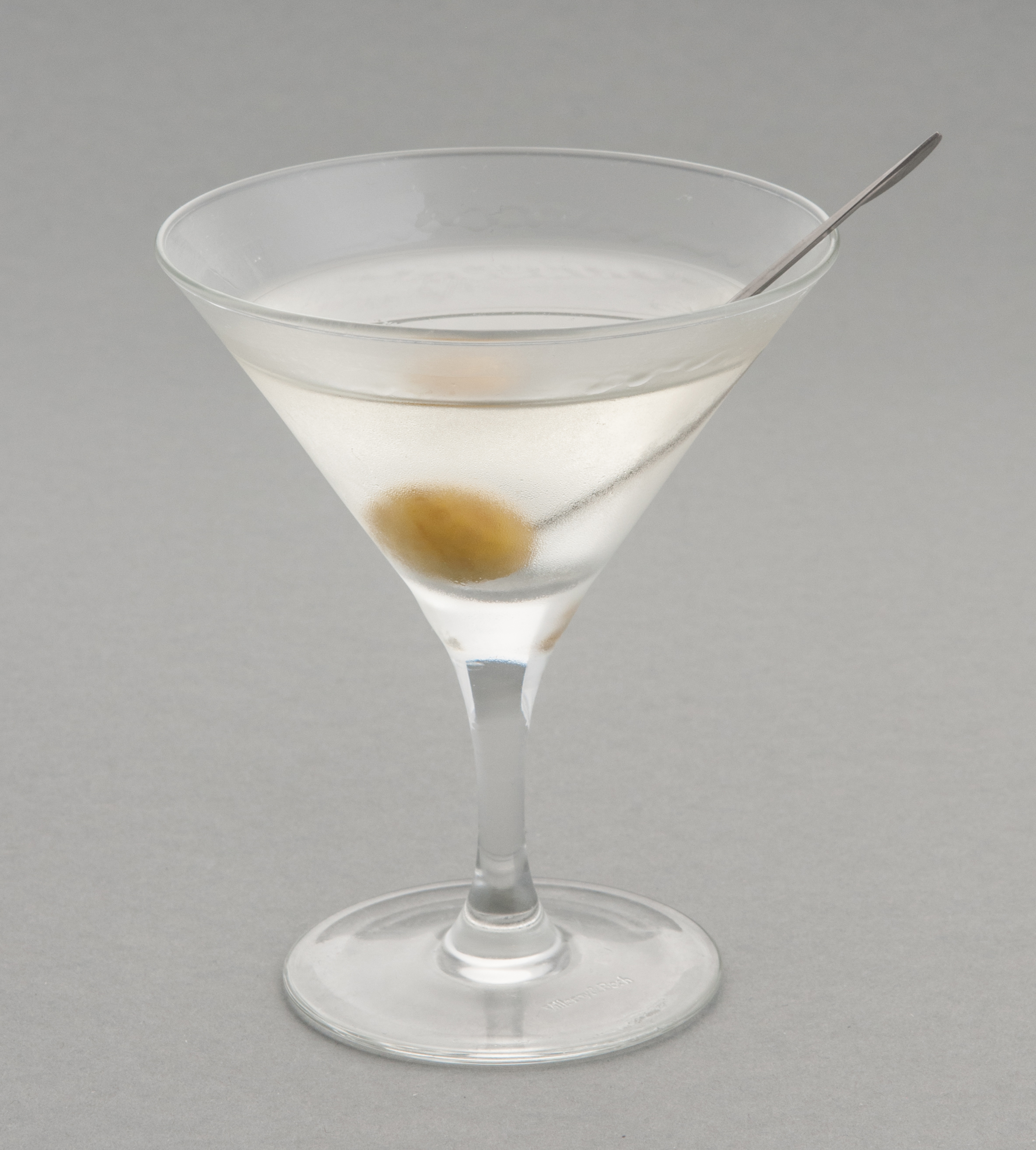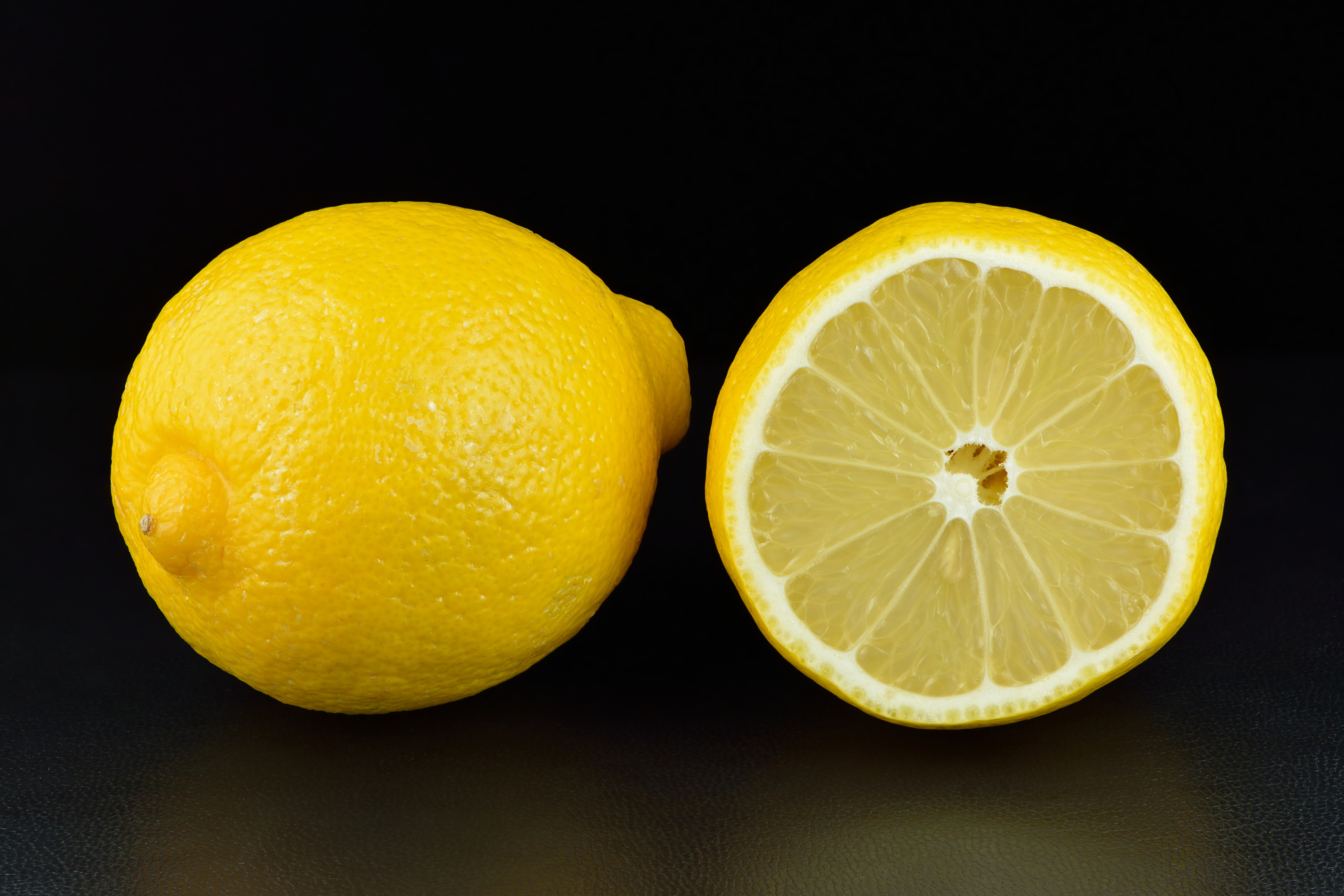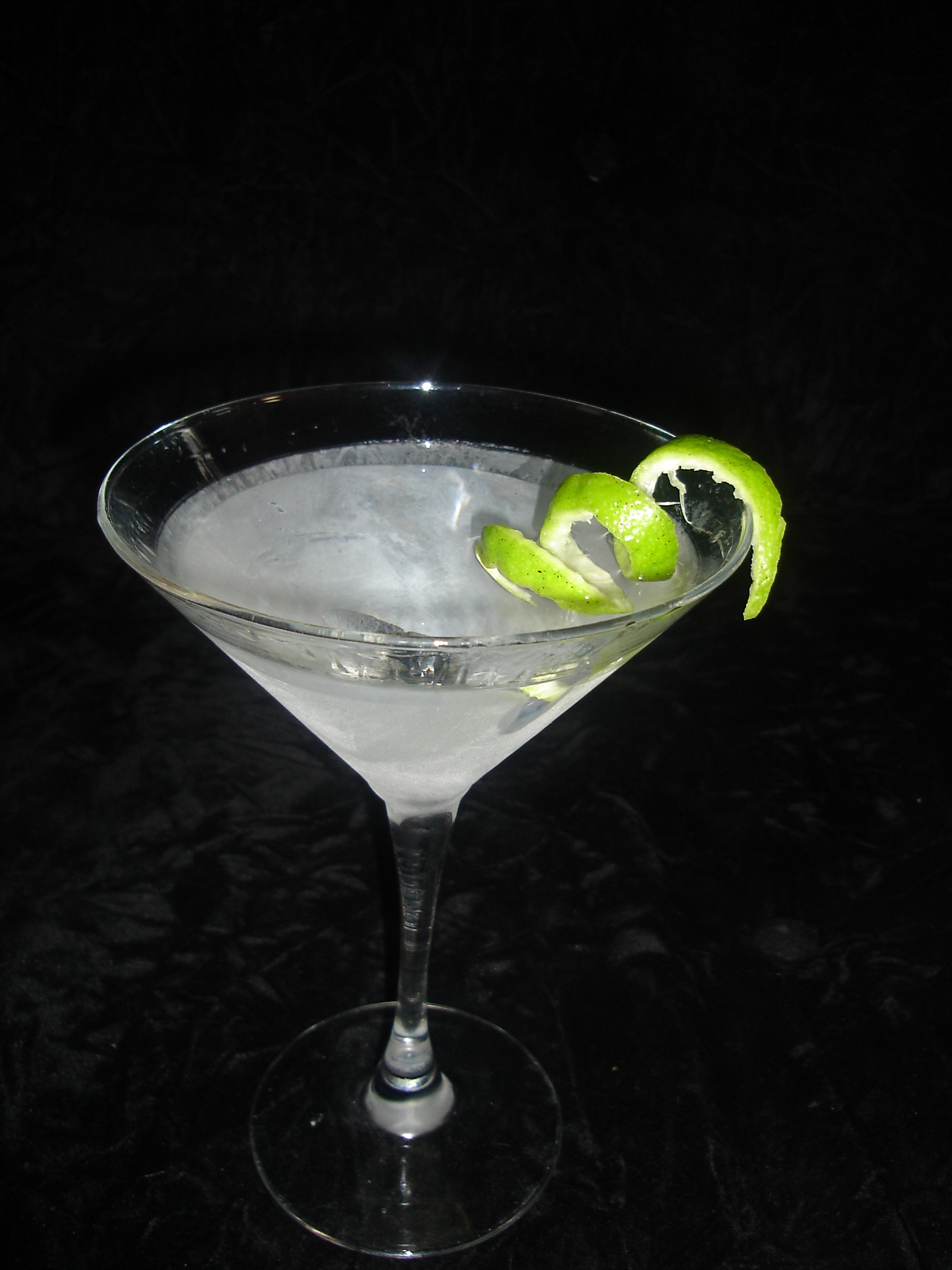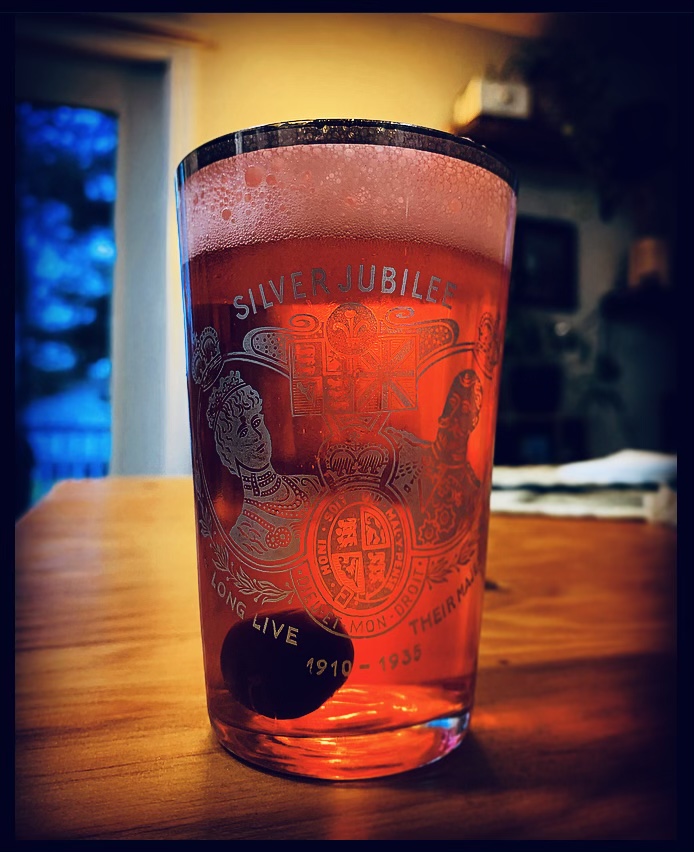|
Bee's Knees
A bees knees (or bee's knees) is a Prohibition era cocktail made with gin, fresh lemon juice, and honey. It is served shaken and chilled, often with a lemon twist. The name comes from prohibition-era slang meaning "the best". History The bee's knees cocktail has unclear origins. It was possibly invented by Frank Meier, an Austrian-born, part Jewish bartender who was the first head bartender at the Ritz in Paris in 1921, when its Cafe Parisian opened its doors. A 1929 news article attributes the cocktail to Margaret Brown, an American socialite. In 2017, Barr Hill Gin started an annual event called Bees Knees Week to encourage people to enjoy the bee's knees cocktail. Bee's Knees Week is the largest sustainability event in the spirits industry, focused on pollinator protection. Variations * Barr Hill Gin is sometimes recommended for its honey infusion, though other gins may be used (including Barr Hill's Tom Cat gin). * The honey may be diluted 1:1 with warm water to th ... [...More Info...] [...Related Items...] OR: [Wikipedia] [Google] [Baidu] |
Prohibition In The United States
In the United States from 1920 to 1933, a nationwide constitutional law prohibited the production, importation, transportation, and sale of alcoholic beverages. The alcohol industry was curtailed by a succession of state legislatures, and finally ended nationwide under the Eighteenth Amendment to the United States Constitution, ratified on January 16, 1919. Prohibition ended with the ratification of the Twenty-first Amendment, which repealed the Eighteenth Amendment on December 5, 1933. Led by pietistic Protestants, prohibitionists first attempted to end the trade in alcoholic drinks during the 19th century. They aimed to heal what they saw as an ill society beset by alcohol-related problems such as alcoholism, family violence, and saloon-based political corruption. Many communities introduced alcohol bans in the late 19th and early 20th centuries, and enforcement of these new prohibition laws became a topic of debate. Prohibition supporters, called "drys", presented ... [...More Info...] [...Related Items...] OR: [Wikipedia] [Google] [Baidu] |
Cocktail
A cocktail is an alcoholic mixed drink. Most commonly, cocktails are either a combination of spirits, or one or more spirits mixed with other ingredients such as tonic water, fruit juice, flavored syrup, or cream. Cocktails vary widely across regions of the world, and many websites publish both original recipes and their own interpretations of older and more famous cocktails. History The origins of the word ''cocktail'' have been debated (see section Etymology). The first written mention of ''cocktail'' as a beverage appeared in ''The Farmers Cabinet,'' 1803 in the United States. The first definition of a cocktail as an alcoholic beverage appeared three years later in ''The Balance and Columbian Repository'' ( Hudson, New York) May 13, 1806. Traditionally, cocktail ingredients included spirits, sugar, water and bitters, however, this definition evolved throughout the 1800s, to include the addition of a liqueur. In 1862 Jerry Thomas published a bartenders: guide called ' ... [...More Info...] [...Related Items...] OR: [Wikipedia] [Google] [Baidu] |
Lemon Juice
The lemon (''Citrus limon'') is a species of small evergreen trees in the flowering plant family Rutaceae, native to Asia, primarily Northeast India (Assam), Northern Myanmar or China. The tree's ellipsoidal yellow fruit is used for culinary and non-culinary purposes throughout the world, primarily for its juice, which has both culinary and cleaning uses. The pulp and rind are also used in cooking and baking. The juice of the lemon is about 5% to 6% citric acid, with a pH of around 2.2, giving it a sour taste. The distinctive sour taste of lemon juice makes it a key ingredient in drinks and foods such as lemonade and lemon meringue pie. History The origin of the lemon is unknown, though lemons are thought to have first grown in Assam (a region in northeast India), northern Myanmar or China. A genomic study of the lemon indicated it was a hybrid between bitter orange (sour orange) and citron. Lemons are supposed to have entered Europe near southern Italy no later than ... [...More Info...] [...Related Items...] OR: [Wikipedia] [Google] [Baidu] |
Honey
Honey is a sweet and viscous substance made by several bees, the best-known of which are honey bees. Honey is made and stored to nourish bee colonies. Bees produce honey by gathering and then refining the sugary secretions of plants (primarily floral nectar) or the secretions of other insects, like the honeydew of aphids. This refinement takes place both within individual bees, through regurgitation and enzymatic activity, as well as during storage in the hive, through water evaporation that concentrates the honey's sugars until it is thick and viscous. Honey bees stockpile honey in the hive. Within the hive is a structure made from wax called honeycomb. The honeycomb is made up of hundreds or thousands of hexagonal cells, into which the bees regurgitate honey for storage. Other honey-producing species of bee store the substance in different structures, such as the pots made of wax and resin used by the stingless bee. Honey for human consumption is collected from ... [...More Info...] [...Related Items...] OR: [Wikipedia] [Google] [Baidu] |
Lemon Twist
A twist is a piece of citrus zest used as a cocktail garnish, generally for decoration and to add flavor when added to a mixed drink. There are a variety of ways of making and using twists. Twists are typically cut from a whole fresh fruit with a small kitchen knife immediately prior to serving, although a peeler, citrus zesters, or other utensil may be used. A curled shape may come from cutting the wedge into a spiral, winding it around a straw or other object, or as a byproduct of the cutting. The name may refer to the shape of the garnish, which is typically curled or twisted longitudinally, or else to the act of twisting the garnish to release fruit oils that infuse the drink. Other techniques include running the twist along the rim of the glass, and "flaming" the twist. They are generally about long (although length varies), and thin. Cocktails featuring a twist include Horse's Neck. A lemon twist is also an optional garnish for the martini, and an orange twist is tradi ... [...More Info...] [...Related Items...] OR: [Wikipedia] [Google] [Baidu] |
Frank Meier
Frank or Franks may refer to: People * Frank (given name) * Frank (surname) * Franks (surname) * Franks, a medieval Germanic people * Frank, a term in the Muslim world for all western Europeans, particularly during the Crusades - see Farang Currency * Liechtenstein franc or frank, the currency of Liechtenstein since 1920 * Swiss franc or frank, the currency of Switzerland since 1850 * Westphalian frank, currency of the Kingdom of Westphalia between 1808 and 1813 * The currencies of the German-speaking cantons of Switzerland (1803–1814): ** Appenzell frank ** Argovia frank ** Basel frank ** Berne frank ** Fribourg frank ** Glarus frank ** Graubünden frank ** Luzern frank ** Schaffhausen frank ** Schwyz frank ** Solothurn frank ** St. Gallen frank ** Thurgau frank ** Unterwalden frank ** Uri frank ** Zürich frank Places * Frank, Alberta, Canada, an urban community, formerly a village * Franks, Illinois, United States, an unincorporated community * Franks, Missouri, United ... [...More Info...] [...Related Items...] OR: [Wikipedia] [Google] [Baidu] |
Hôtel Ritz Paris
The Ritz Paris is a hotel in central Paris, overlooking the Place Vendôme in the city's 1st arrondissement. A member of the Leading Hotels of the World marketing group, the Ritz Paris is ranked among the most luxurious hotels in the world. The hotel was founded in 1898 by the Swiss hotelier César Ritz in collaboration with the French chef Auguste Escoffier. The hotel was constructed behind the façade of an eighteenth-century townhouse. It was among the first hotels in Europe to provide an en suite bathroom, electricity, and a telephone for each room. It quickly established a reputation for luxury and attracted a clientele that included royalty, politicians, writers, film stars, and singers. Several of its suites are named in honour of famous guests of the hotel including Coco Chanel, and the cocktail lounge Bar Hemingway pays tribute to writer Ernest Hemingway. Beginning in 2012, the 159-room hotel underwent a four-year, multimillion-euro renovation, reopening on 6 June 2 ... [...More Info...] [...Related Items...] OR: [Wikipedia] [Google] [Baidu] |
Margaret Brown
Margaret Brown (née Tobin; July 18, 1867 – October 26, 1932), posthumously known as "The Unsinkable Molly Brown", was an American socialite and philanthropist. She unsuccessfully encouraged the crew in Lifeboat No. 6 to return to the debris field of the 1912 sinking of RMS ''Titanic'' to look for survivors. During her lifetime, her friends called her "Maggie", but even by her death, obituaries referred to her as the "Unsinkable Molly Brown". The reference was further reinforced by a 1960 Broadway musical based on her life and its 1964 film adaptation which were both entitled ''The Unsinkable Molly Brown''. Early life Margaret Tobin is believed by scholars to have been born on July 18, 1867, in a cottage near the Mississippi River in Hannibal, Missouri, on Denkler's Alley. The three-room cottage is now the Molly Brown Birthplace and Museum on 600 Butler Street in Hannibal. Her parents were Irish Catholic immigrants John Tobin (1821–1899), an abolitionist who supported th ... [...More Info...] [...Related Items...] OR: [Wikipedia] [Google] [Baidu] |
Bee's Knees
A bees knees (or bee's knees) is a Prohibition era cocktail made with gin, fresh lemon juice, and honey. It is served shaken and chilled, often with a lemon twist. The name comes from prohibition-era slang meaning "the best". History The bee's knees cocktail has unclear origins. It was possibly invented by Frank Meier, an Austrian-born, part Jewish bartender who was the first head bartender at the Ritz in Paris in 1921, when its Cafe Parisian opened its doors. A 1929 news article attributes the cocktail to Margaret Brown, an American socialite. In 2017, Barr Hill Gin started an annual event called Bees Knees Week to encourage people to enjoy the bee's knees cocktail. Bee's Knees Week is the largest sustainability event in the spirits industry, focused on pollinator protection. Variations * Barr Hill Gin is sometimes recommended for its honey infusion, though other gins may be used (including Barr Hill's Tom Cat gin). * The honey may be diluted 1:1 with warm water to th ... [...More Info...] [...Related Items...] OR: [Wikipedia] [Google] [Baidu] |
Barr Hill Gin
Caledonia Spirits is a craft distillery in Montpelier, Vermont. The distillery is known for its Barr Hill-brand spirits, including gin, vodka, and an Old Tom gin called Tom Cat. The company's flagship product is its Barr Hill Gin, which is the top-selling Vermont-made spirit and the most awarded gin made in the US. History The distillery was originally located in Hardwick in Vermont's Caledonia County (in the Northeast Kingdom). It was founded by Todd Hardie, a lifelong beekeeper who wanted to popularize honey-based beverages and highlight the important and threatened role of bees in the environment. Ryan Christiansen serves as the company's president and head distiller. The two met in 2011, while Hardie was using raw honey in his small production winery at the time. In the 2010s, the company moved to Montpelier, opening a 27,000-square-foot distillery. In 2019, the company expanded its presence there, opening a cocktail bar and retail store. Operations The distillery distri ... [...More Info...] [...Related Items...] OR: [Wikipedia] [Google] [Baidu] |
Absinthe
Absinthe (, ) is an anise-flavoured spirit derived from several plants, including the flowers and leaves of ''Artemisia absinthium'' ("grand wormwood"), together with green anise, sweet fennel, and other medicinal and culinary herbs. Historically described as a highly alcoholic spirit, it is 45–74% ABV or 90–148 proof US. Absinthe traditionally has a natural green color, but may also be colorless. It is commonly referred to in historical literature as ' ("the green fairy"). It is sometimes mistakenly referred to as a liqueur, but is not traditionally bottled with added sugar, so is classified as a spirit. Absinthe is traditionally bottled at a high level of alcohol by volume, but it is normally diluted with water before being consumed. Absinthe originated in the canton of Neuchâtel in Switzerland in the late 18th century. It rose to great popularity as an alcoholic drink in late 19th- and early 20th-century France, particularly among Parisian artists and writers. The co ... [...More Info...] [...Related Items...] OR: [Wikipedia] [Google] [Baidu] |
Cocktails With Gin
A cocktail is a mixed drink typically made with a distilled liquor (such as arrack, brandy, cachaça, gin, rum, tequila, vodka, or whiskey) as its base ingredient that is then mixed with other ingredients or garnishments. Sweetened liqueurs, wine, or beer may also serve as the base or be added. If beer is one of the ingredients, the drink is called a beer cocktail. Cocktails often also contain one or more types of juice, fruit, honey, milk or cream, spices, or other flavorings. Cocktails may vary in their ingredients from bartender to bartender, and from region to region. Two creations may have the same name but taste very different because of differences in how the drinks are prepared. This article is organized by the primary type of alcohol (by volume) contained in the beverage. Cocktails marked with "IBA" are designated as IBA official cocktails by the International Bartenders Association, and are some of the most popular cocktails worldwide. Absinthe * Death in t ... [...More Info...] [...Related Items...] OR: [Wikipedia] [Google] [Baidu] |






.jpg)


